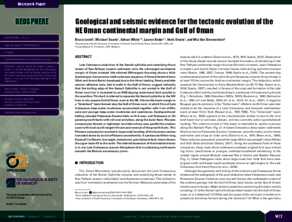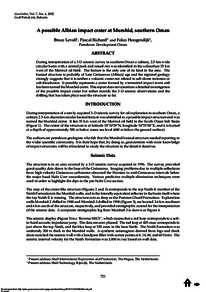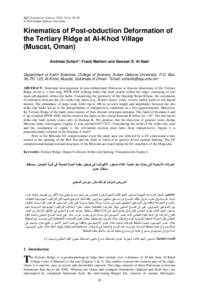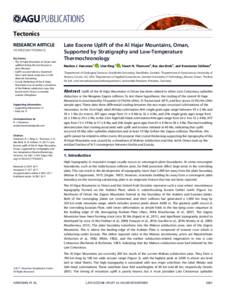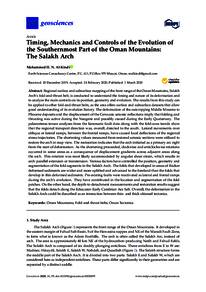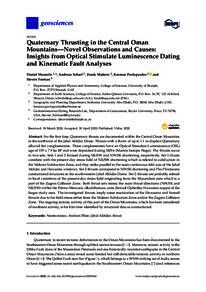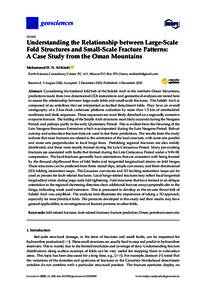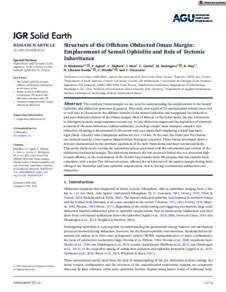Document
Geological and seismic evidence for the tectonic evolution of the NE Oman continental margin and Gulf of Oman.
Identifier
DOI: 10.1130/GES02376.1
Source
Geosphere. v. 17, 5, p. 1472-1493
Contributors
Searle, Michael., Author
White, Adrian., Author
Kedar, Lauren., Author
Droste, Henk., Author
van Steenwinkel, Mia., Author
Country
United States.
City
Colorado
Publisher
Geological Society of America.
Gregorian
2021-10-01
Language
English
English abstract
Late Cretaceous obduction of the Semail ophiolite and underlying thrust sheets of Neo-Tethyan oceanic sediments onto the submerged continental margin of Oman involved thin-skinned SW-vergent thrusting above a thick Guadalupian-Cenomanian shelf-carbonate sequence. A flexural foreland basin (Muti and Aruma Basin) developed due to the thrust loading. Newly available seismic reflection data, tied to wells in the Gulf of Oman, suggest indirectly that the trailing edge of the Semail Ophiolite is not rooted in the Gulf of Oman crust but is truncated by an ENE-dipping extensional fault parallel to the coastline. This fault is inferred to separate the Semail ophiolite to the SW from in situ oceanic Gulf of Oman crust to the NE. It forms the basin margin to a “hinterland” basin formed atop the Gulf of Oman crust, in which 5 km of Late Cretaceous deep-water mudstones accumulated together with 4 km of Miocene and younger deep-water mudstones and sandstones. Syndepositional folding included Paleocene-Eocene folds on N-S axes, and Paleocene to Oligocene growth faults with roll-over anticlines, along the basin flank. Pliocene compression formed, or tightened, box folds whose axes parallel the modern coast with local south-vergent thrusts and reversal of the growth faults. This Pliocene compression resulted in large-scale buckling of the Cenozoic section, truncated above by an intra-Pliocene unconformity. A spectacular 60-km-long, Eocene(?) to Recent, low-angle, extensional, gravitational fault, down-throws the upper basin fill to the north. The inferred basement of the hinterland basin is in situ Late Cretaceous oceanic lithosphere that is subducting northwards beneath the Makran accretionary prism.
ISSN
1553-040X
Category
Journal articles

